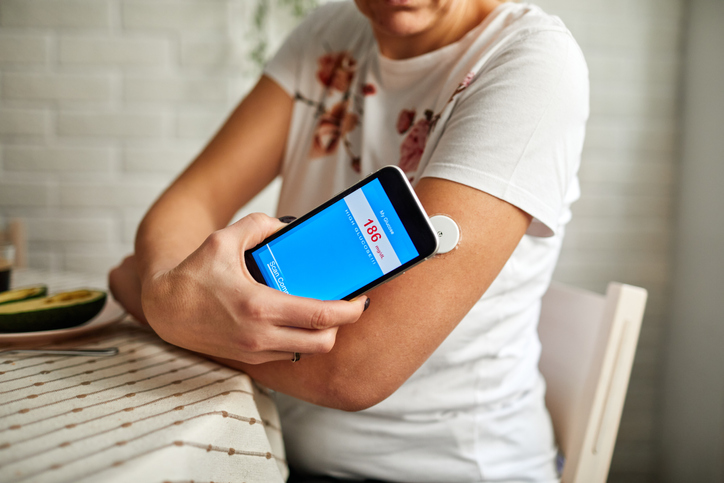Challenging the Limits of CGM for the Elderly and Those with Type 2 Diabetes
By Andrew Briskin
 On the opening morning of the ATTD 2023 conference, several leading clinicians from across Europe gathered to discuss the future of continuous glucose monitoring (CGM) technology – and what can be done today to deliver the benefits of CGM to everyone with diabetes.
On the opening morning of the ATTD 2023 conference, several leading clinicians from across Europe gathered to discuss the future of continuous glucose monitoring (CGM) technology – and what can be done today to deliver the benefits of CGM to everyone with diabetes.
Diabetologists gathered at the Advanced Technology and Treatments in Diabetes (ATTD) 2023 conference in Berlin, Germany, to discuss the potential power of CGM technology for different groups of people with diabetes – specifically on expanding access to elderly adults and a greater number of people with type 2 diabetes.
The discussion featured an interactive forum in which healthcare providers in the audience were polled about different practical issues around CGM use among each of their patients. Moderating the panel was Stephen Dixon, a journalist and TV presenter from the United Kingdom, who lives with type 1 diabetes.
CGM in Elderly Adults
Dixon opened up the forum with a question to the audience: What percent of elderly patients with diabetes are using CGM? Though Dixon acknowledged that “elderly” could be defined differently by different care providers, over half of the providers in the room responded that less than 20% of their elderly patients were using a CGM.
“It depends where you are in the world and who you say is ‘elderly,’ but that’s not [a] surprising [result].” said Prof. Samuel Seidu, clinical professor in primary care diabetes and cardio-metabolic medicine at the University of Leicester in the UK. Seidu explained that in many cases, providers may be biased against prescribing CGM to elderly adults based on a perceived lack of ‘tech-savviness’.
“There is some data that in countries like the UK, France, United States, or Canada, you have more than 50% of elderly patients who own a smartphone,” Seidu said. “A number of 20% seems small because the data suggests that older individuals are just as competent and can learn to use the technology and benefit from it.”
Prof. Bernhard Kulzer, head of the department of psychology at the Diabetes Center Bad Mergentheim and CEO of the Research Institute of the Diabetes Academy Mergentheim in Germany, was also not surprised by the result and urged providers in the audience to recognize this bias while in the clinic.
“Do not stigmatize the elderly population and think they cannot handle technology,” said Kulzer. “CGM technology gives elderly people more security and protection against hypoglycemia, which comes with even higher risks compared to younger people with diabetes, and helps them maintain better quality of life. CGM is a very powerful tool for elderly people, especially those on insulin therapy.”
CGM with type 2 diabetes
Shifting gears as discussion moderator, Dixon again surveyed the audience, this time asking whether CGM use should be limited only to people with type 2 diabetes taking both basal/bolus insulin or who use a pump? Roughly 72% of respondents disagreed, saying that CGM should be available for many more with type 2.
Prof. Ramzi Ajjan, professor of metabolic medicine and an honorary consultant in diabetes and endocrinology at Leeds University in the UK, explained that while he, too, disagreed, he understood those who may have concerns about the cost of the device.
“I understand the concern about cost, however, I think we need to be careful about that issue,” Ajjan said. “Getting a CGM may raise the cost of care for the first year or two, but the benefits that come from it could reduce costs over 5-10 years. This is why I am with the 72%.”
Clarifying, Ajjan explained that the constant feedback on glucose levels from a CGM helps people adjust to highs or lows in real time. It also significantly accelerates the time it takes for healthcare providers to adjust treatment, compared to measuring A1C, which is only measured once every three months.
“It is well known that we delay treatment intensification in T2D,” Ajjan said. “CGM will help to start advancing treatment earlier, and in a safe way. If you have lots of data about glycemia, the provider and the patient will be more comfortable making changes. If the patient is feeling better, and improving glucose, and reducing complications, and reducing visits to the hospital, what more would you want as a physician?”
Ajjan and Dr. Jean-Pierre Riveline, an endocrinologist and professor at the University Center for Diabetes and its Complications, Hôpital Lariboisière in Paris, France, pointed out one of the main limitations to making CGM available to all with type 2, which is that there has been a shortage of scientific evidence in clinical trials for people with type 2 who are not on intensive insulin therapy.
“We need to add some evidence that convinces authorities to cover these systems,” Riveline said. “We see that the majority of those in this room are convinced that CGM could be helpful for this population, but we need more clinical evidence to convince authorities [and insurers].”
Both Ajjan and Riveline agreed that there is a much wider array of treatments that different people with type 2 diabetes might receive, which makes it difficult to make a “one size fits all” use of CGM for all those with type 2. The speakers and interactive forum demonstrated how healthcare providers from across the globe are using CGM, and how they hope to expand its use for people with diabetes who may be without it.








